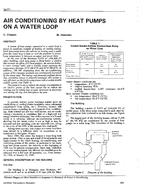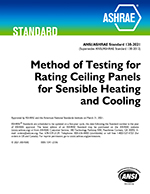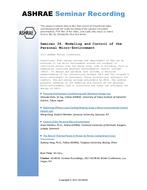Click here to purchase
A mass and energy balance approach was implemented using EES (Engineering Equation Solver) (F-Chart 2018) to estimate the annual energy performance of a single-duct variable-air volume (VAV) system with variable-air flow series fan-powered terminal units (FPTUs). The fan models were based on the performance data provided by multiple manufacturers for fans with electronically commutated motors (ECMs). Two control approaches (airflow and temperature) were evaluated for the cooling operations of the FPTUs. In both approaches, secondary air is mixed with primary air to provide high enough air temperatures at full cooling to minimize condensation on discharge registers and higher temperatures at low cooling loads to reduce cold drafts from the registers. Hourly loads in a five-zone building were generated using EnergyPlus (DOE 2016). The hourly zone loads and weather data were used as input to a single-duct VAV system modelusing EES to estimate energy use for the five-zone building in five cities: Houston, Phoenix, San Francisco, New York, and Chicago. In addition to modeling the airflow and temperature control approaches, the effect of sizing the FPTU relative to the design cooling load was evaluated through the use of the capacity factor for the ECMs. Both control approaches provided similar estimates of energy use in each city. The largest difference between the airflow and temperature control approaches was 1% for the case of FPTUs with a 0% capacity factor. These small differences in energy use indicate that manufacturers could employ either control strategy when programming variable-airflow series FPTUs in the field and expect comparable results in performance. Both control approaches provided significant savings over a conventional fixed-airflow series FPTU with a permanent split capacitor.
Citation: 2018 Annual Conference, Houston, TX, Technical Papers
Product Details
- Published:
- 2018
- Number of Pages:
- 14
- Units of Measure:
- Dual
- File Size:
- 1 file , 3.5 MB
- Product Code(s):
- D-HO-18-006


